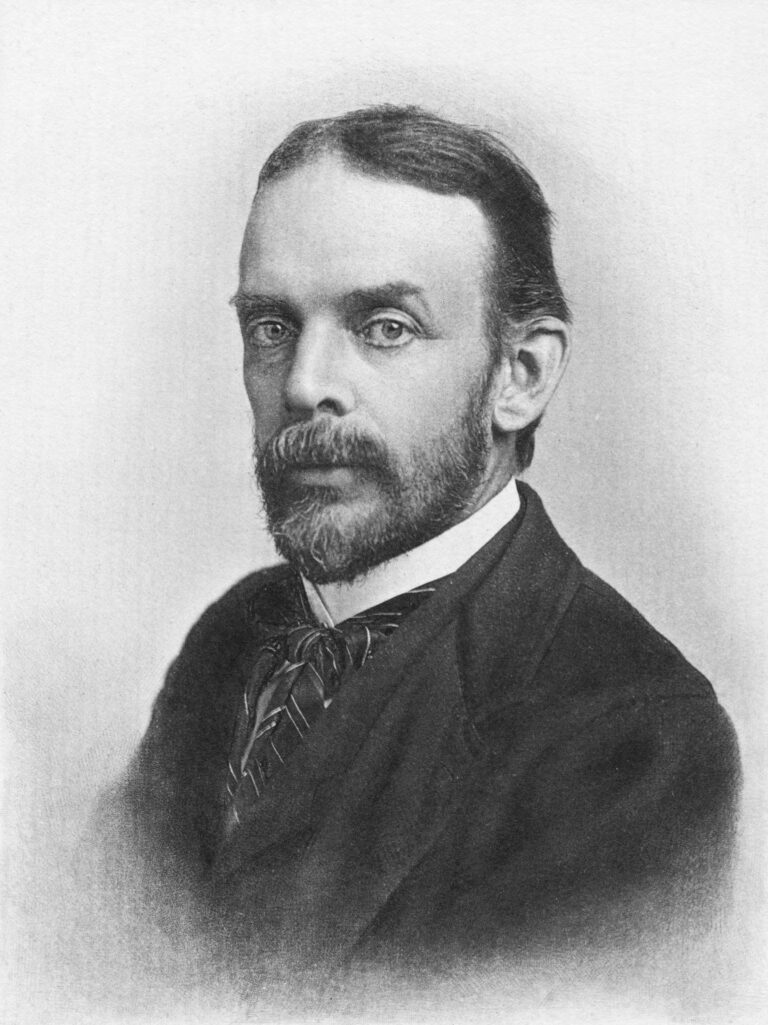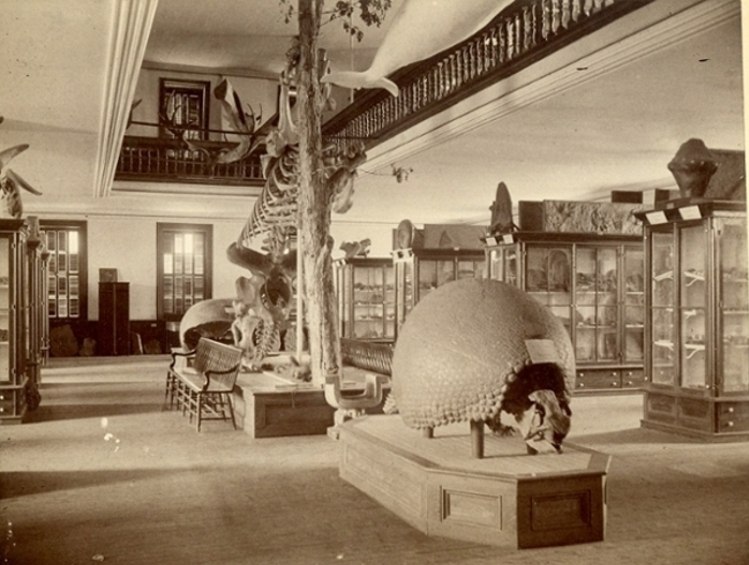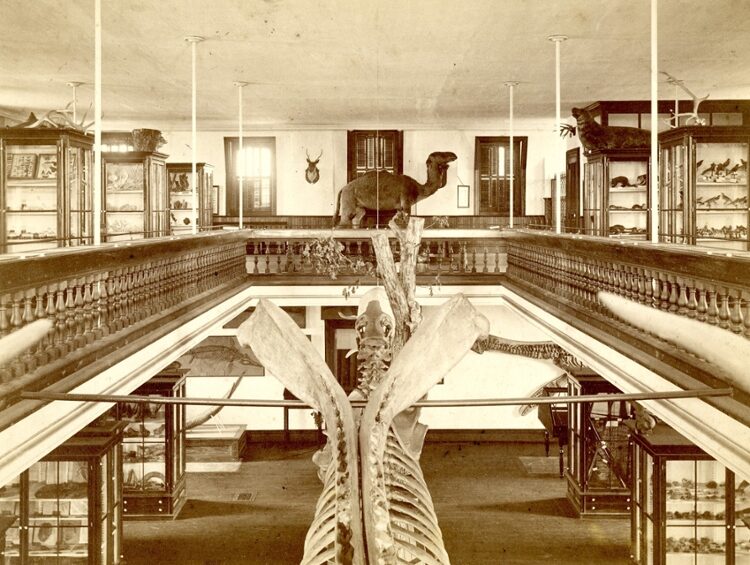ABOUT THE COLLECTION

The Wesleyan University Museum was opened in 1871 and occupied the top two floors of the newly built Judd Hall. The building was called the Orange Judd Hall of Natural Sciences, named after its main benefactor – Orange Judd, then Methodist philanthropist and Member of the Board of Trustees.
The Museum’s first Curator was George Brown Goode, a member of Wesleyan’s class of 1870. Goode was the son-in-law of the museum’s founder- Orange Judd, but family relations aside, he was an entirely appropriate choice. He was working on a Master’s degree with Louis Agassiz at the Harvard Museum of Comparative Zoology, but cut his studies short to take Curatorship of the new museum at Wesleyan in 1871.
George Brown Goode established the Wesleyan collection as one of the best in its day. He became an influential, highly cited thinker in the field of museum science, organizer of important exhibitions as well as a renown Ichthyologist. Goode was a pivotal thinker in transforming museums of that time from the cabinet-of-curiosities format to the modern tripartite structure of research, collection and public engagement. In 1887, Goode became the assistant secretary at the United States National Museum (now the Smithsonian National Museum of Natural History), a position he held until his death in 1896.
We have chosen to name the remaining Museum collection of extant animals in honor of Goode. These collections include ~250 stuffed birds, over 300 osteological specimens, hundreds of mounted butterflies and numerous specimens preserved in jars.

